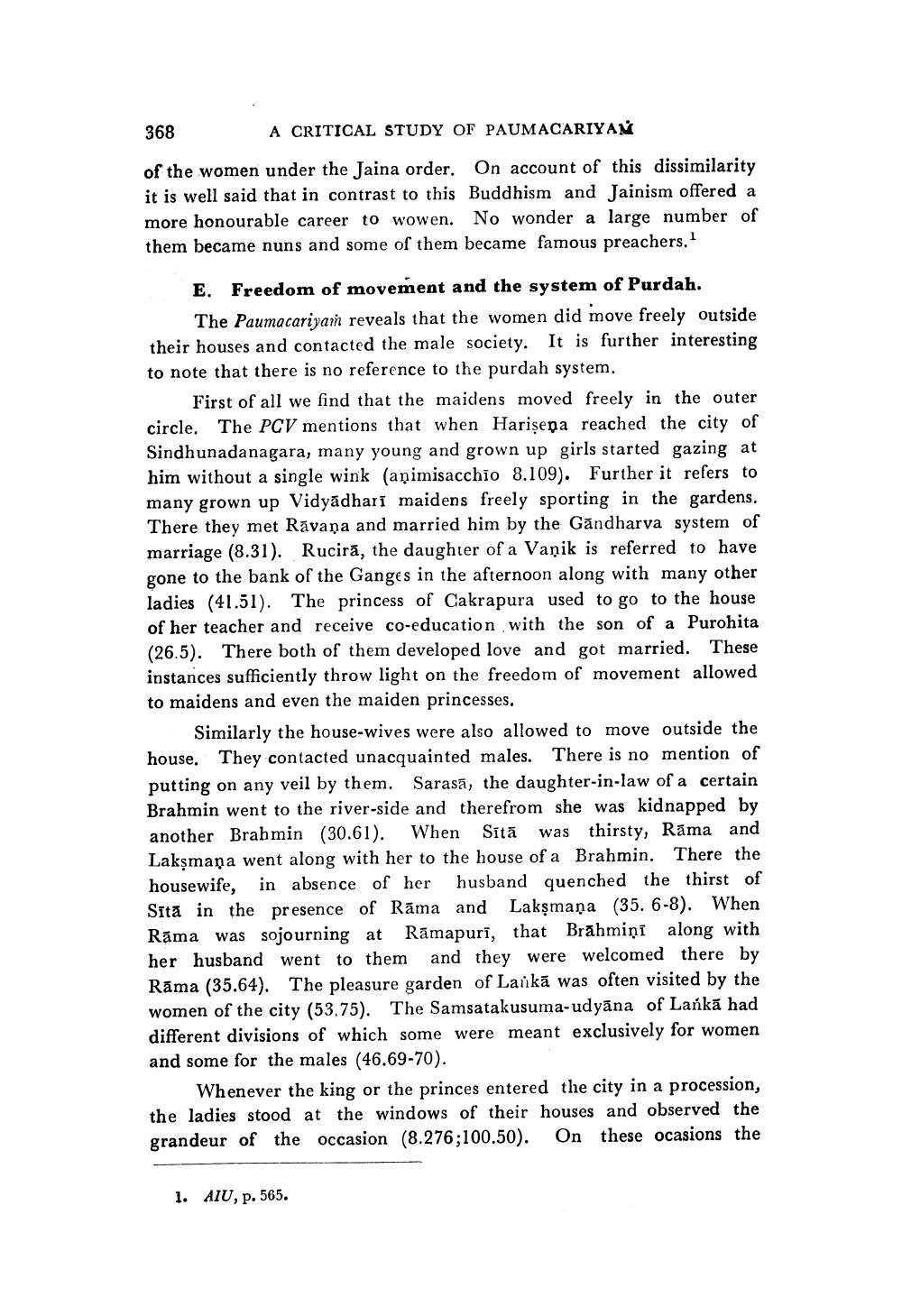________________
368
A CRITICAL STUDY OF PAUMACARIYAM
of the women under the Jaina order. On account of this dissimilarity it is well said that in contrast to this Buddhism and Jainism offered a more honourable career to wowen. No wonder a large number of them became nuns and some of them became famous preachers.1
E. Freedom of movement and the system of Purdah.
The Paumacariyam reveals that the women did move freely outside their houses and contacted the male society. It is further interesting to note that there is no reference to the purdah system.
First of all we find that the maidens moved freely in the outer circle. The PCV mentions that when Hariṣeņa reached the city of Sindhunadanagara, many young and grown up girls started gazing at him without a single wink (animisacchio 8.109). Further it refers to many grown up Vidyadhari maidens freely sporting in the gardens. There they met Rāvana and married him by the Gandharva system of marriage (8.31). Rucira, the daughter of a Vanik is referred to have gone to the bank of the Ganges in the afternoon along with many other ladies (41.51). The princess of Cakrapura used to go to the house of her teacher and receive co-education with the son of a Purohita (26.5). There both of them developed love and got married. These instances sufficiently throw light on the freedom of movement allowed to maidens and even the maiden princesses.
Similarly the house-wives were also allowed to move outside the house. They contacted unacquainted males. There is no mention of putting on any veil by them. Sarasa, the daughter-in-law of a certain Brahmin went to the river-side and therefrom she was kidnapped by another Brahmin (30.61). When Sītā was thirsty, Rāma and Lakṣmaṇa went along with her to the house of a Brahmin. There the housewife, in absence of her husband quenched the thirst of Sīta in the presence of Rama and Lakṣmaṇa (35. 6-8). When Rāma was sojourning at Ramapuri, that Brahminī along with her husband went to them and they were welcomed there by Rama (35.64). The pleasure garden of Lanka was often visited by the women of the city (53.75). The Samsatakusuma-udyāna of Laňka had different divisions of which some were meant exclusively for women and some for the males (46.69-70).
Whenever the king or the princes entered the city in a procession, the ladies stood at the windows of their houses and observed the grandeur of the occasion (8.276;100.50). On these ocasions the
1. AIU, p. 565.




